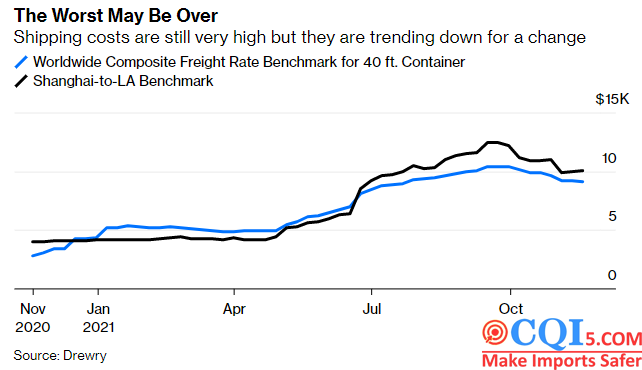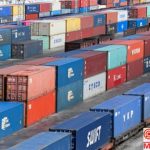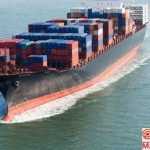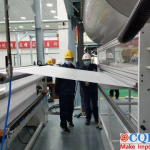The Worst Of The Global Supply Chain Crisis Being Behind Us
The data suggests that the global supply chain distress is easing, or at least has stopped deteriorating.
Average ocean freight rates for 40-foot containers worldwide have fallen for eight consecutive weeks, according to data released Thursday by US maritime consulting and research firm Drewry. Spot rates on the busy Shanghai-Los Angeles route have rebounded but are also down about 19 % from their September peak.

According to the Southern California Maritime Exchange, 71 container ships were anchored offshore on Nov. 19, down from a peak of 86 three days earlier, and 17 more are expected to arrive within three days. And the number of containers stranded at the Port of Los Angeles for more than nine days has fallen by about a third since the port announced in October that it would fine carriers for being stranded for too long, Bloomberg data said.
Global Supply Chain Crisis Eased
Shipping and retail executives said they expect the backlog at US ports to be cleared by early 2022, when the holiday shopping season ends and output slows in February when many Chinese factories will be closed for a week for the Lunar New Year.
- P. Morgan noted that global supply chain bottlenecks may have begun to ease, with global car sales up 3.8% in October from a year earlier, and while the negative impact of parts shortages may continue, at least the sector is showing some signs of improvement.
After a slowdown in production in recent months due to the outbreak, factory output in Malaysia, Vietnam and other countries has rebounded in the past month as fewer cases and production restrictions have been lifted, easing some of the global semiconductor and textile production crunch.
Louis Kuijs, head of Asian economics at Oxford economics, said, “Globally, the worst of the supply chain problems are behind us.”
It’s not over yet
To be sure, supply chain pressure has peaked doesn’t mean it’s over.
Cargo Is Still The Biggest Threat Of Global Supply Chain Crisis
Shipping costs remain very high from a historical perspective: global benchmark rates are up by more than 200% compared to the same period last year. The Baltic Freight Index shows that freight rates rose by around 5% last week to around $14,700 per 40ft container, still more than three times the level of the same period the previous year.
Delays for container ships fell in October compared to September, but the number of vessels waiting outside ports did not change much in November, data provider eeSea said. As of Friday morning, there were 500 large container ships waiting to dock outside ports in Asia, Europe and North America, up slightly from the 497 waiting on October 8.
Strong consumer demand for commodities, continued congestion at US ports, a shortage of truck drivers and rising global freight rates will remain a threat to the recovery, the Wall Street Journal said. More extreme weather and the risk of new outbreaks of cases could also clog supply chains again.
Factory owners in Vietnam’s southern manufacturing hubs say that although production is much smoother than it was a few months ago, challenges remain and many workers who returned to their villages during the outbreak have yet to return.
Do Xuan Lap, president of the Vietnam Timber and Forest Products Association, said that medium-sized furniture factories with around 200 to 500 workers were operating at around 80 %; however, larger furniture manufacturers with up to 3,000 employees had fewer workers and were operating at around 65 %.
Executives in the US shipping industry pointed out that freight railways recently lifted restrictions on cargo entering Chicago’s container terminals, and that the ports of Los Angeles and Long Beach are still flooded with containers, with no reduction in the flow of inbound cargo.
“We’re still in the toughest of times,” said Alan McCorkle, CEO of Yusen Terminals LLC at the Port of Los Angeles.
CQI5 is committed to providing importers worldwide with product quality inspection services that far exceed those of our peers. If you are planning to import or have imported from China or Southeast Asian countries, please contact us cs’@’cqipro.com to learn more about how we can make your imports safer.
Disclaimer:
CQI5 article information from the Internet and contributions, the copyright of which belongs to the original author, and only represents the views of the original author. This website is only responsible for sorting out, typesetting and editing the articles, reproduced for the purpose of spreading more information, does not imply that it endorses its views or proves the truthfulness, completeness and accuracy of its content, and therefore does not assume any legal responsibility.
The information contained in this article is for reference only and is not intended as direct advice for decision-making.
If we inadvertently violate your copyright, please inform us, after verification, we will immediately correct or delete the content according to the requirements of the copyright holder, thank you! Contact, email: copyright@cqipro.com
This website has the final right to interpret this statement.
Welcome to reprint, please be sure to keep information complete.





